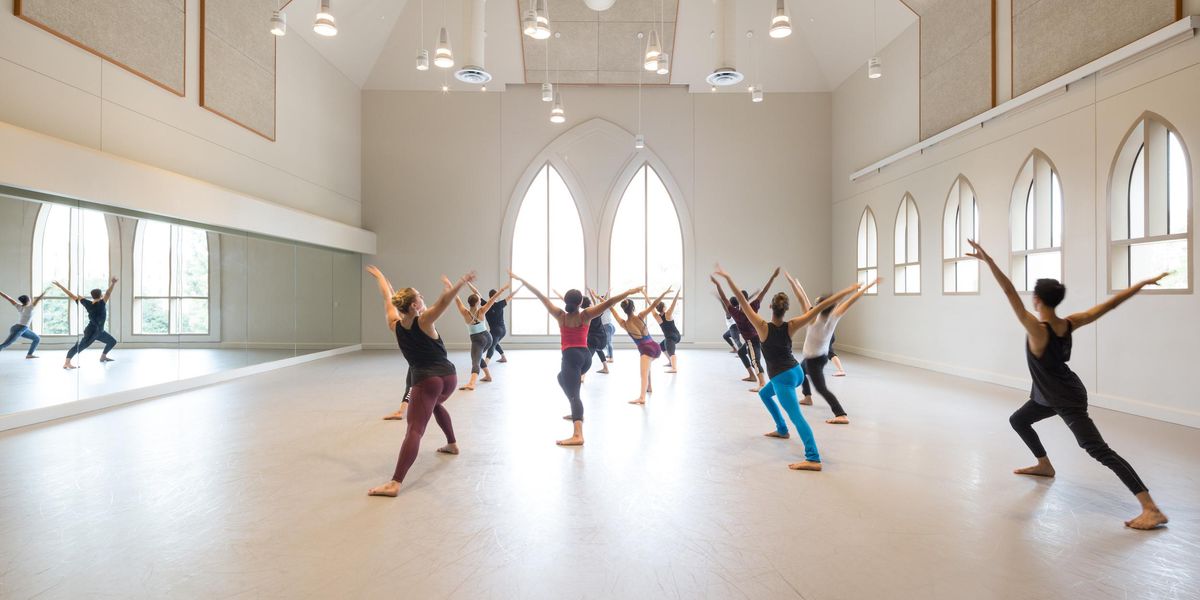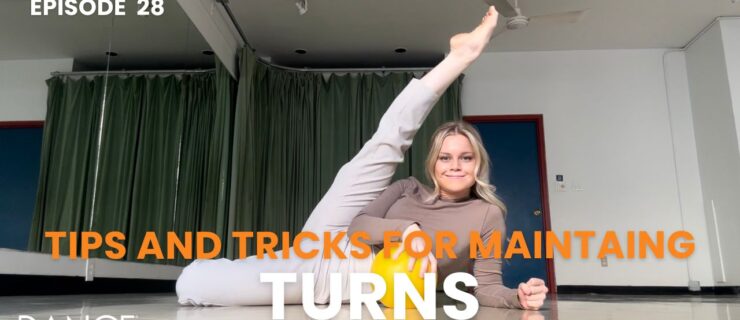Through the Glass Ceiling
Three who carved their own paths: Lourdes Lopez, Larissa Saveliev, & Alessandra Ferri
Who are the leaders in our field?
What are their attributes? Did they get there by chance or by design? We talked to three amazing women who have recently emerged as leaders in dance, which, let’s face it, is dominated by men—especially in ballet. These women found their way into top positions not only through their talent and skills, but also by embracing new experiences.
Lourdes Lopez
When Lourdes Lopez conducts a class at Miami City Ballet, purposeful moments in the studio connect with this artistic director’s life. At 55, Lopez cuts a lithe figure as she drills and demonstrates, sometimes coming in close to adjust a dancer’s body, letting her hands transmit a knowledge inscribed in muscle and bone. But her words also evoke a sustaining past.
Right: Lopez teaching at the MCB School. By Daniel Azoulay, Courtesy MCB
To point out the importance of pliés, Lopez says, “Balanchine would ask us to do these non-stop!” As she explains his insistence on this stabilizing skill—and always moving through first as “an opportunity to correct yourself”—it’s easy to imagine her as a rising star under the master’s guidance at New York City Ballet, where she danced from 1975 to 1997, the last 13 years there as a principal.
After class, Lopez praises one of her early teachers, who ran a studio in South Florida, where her parents settled after fleeing post-revolutionary Cuba. “I was lucky to have Martha Mahr. She showed me there was a right and a wrong way to do steps—and that’s the heritage which gives beauty to our art. She offered me a technical foundation but also made me a stronger person. She taught me respect for work.”
Into her second year leading MCB—and the first that she’s programmed—Lopez instills in her dancers these ethics. “It’s important how you treat a partner, an audience,” she emphasizes. “Ours is an art of good manners.”
Especially notable for a Latina, Lopez has joined a tiny club of female ballet-company directors. But she insists success in this spotlight hinges not so much on gender issues as on meeting challenges as “a fully realized human being.” That condition rests upon the base that her late mother provided. “She taught us a sense of self and pride in being Cuban immigrants,” Lopez says. “We never felt weak in her house.”
Having retired from the stage, Lopez became executive director of the Balanchine Foundation in 2002. As co-founder with Christopher Wheeldon of the contemporary ballet company Morphoses in 2006, she earned what amounted to an advanced degree in development, programming, and marketing. Morphoses, now on hiatus, will eventually be linked to MCB as “a choreographic arm that gives our community a full spectrum of this art and will push our dancers in a different way,” says Lopez.
MCB corps member Adriana Pierce welcomes “the positive vibe” Lopez has created with a more diversified repertoire and her encouragement of the dancers’ forays into choreography.
Principal Jennifer Kronenberg appreciates how the director makes herself available to dancers, pointing out that Lopez “has maintained an open-door policy—a luxury that doesn’t go on everywhere.”
In the wake of founding artistic director Edward Villella’s sudden departure last fall, Lopez faced scary moments. “How do you step in and succeed, especially taking over a position held by such a strong personality?” she questioned. “You’re pulled in so many different directions. I still think back now and wonder how Mr. Balanchine kept his peace.”
Her old hometown has proven surprisingly amenable to both Lopez and her husband, investment banker George Skouras. While her daughter by a previous marriage remains in New York working at Vogue, the Skouras’ younger daughter has been slower to acclimate to her new environment. “I’m hoping she’s going to take from this that her mom embarked on a different path in a chancy environment,” Lopez maintains. “In that, I’m being true to myself.” —Guillermo Perez
Larissa Saveliev
“They become fearless,” says Larissa Saveliev, describing what students gain through competing in her organization, Youth America Grand Prix. “In a company, when somebody gets injured, you can throw them onstage, and boom, they go. The stress, which kills some dancers, makes them stronger.”
Left: Teaching at Southland Ballet Academy in California. By Dave Friedman, Courtesy YAGP.
That prized quality—fearlessness—encapsulates Saveliev herself. A fireball of energy, Saveliev has been instrumental in the careers of countless dancers around the world. Now in its 15th season, YAGP has come a long way from Saveliev’s early days of cold-calling ballet schools with invitations.
Twenty years ago, pre-professional ballet competitions were frowned upon by elite schools. For ballet students, there were two options: Regional Dance America, of which one has to be a member, and the Prix de Lausanne in Switzerland, which, if you win, leads to a scholarship of your choice. YAGP, for students ages 9 to 19, takes the opposite approach: School and company directors on the jury and in the audience award scholarships or contracts to promising dancers, whether they win a medal or not.
Today, the schools affiliated with many of the world’s largest companies, as well as smaller sources of talent, send both students and adjudicators to YAGP. On the rosters of the world’s major ballet companies, you’ll find more than 300 YAGP alumni.
Saveliev is a natural matchmaker. The former Bolshoi dancer makes it her business to know the backgrounds of her most talented competitors—and, generally, what each partner school or company looks for in its dancers. “If Franco [De Vita, principal of ABT’s JKO School] is asking, I can tell him, The parents are very poor so they’re never going to move to New York, but if you want to offer them California, they might come because they have family there.” Over the years, she has learned company preferences as well. “The Stuttgart will never hire anybody without feet. For the Royal, I think face is very important. For Hamburg, it doesn’t matter if their legs are a little shorter, but they have to be a great mover.”
And if a dancer has her heart set on a company that is unrealistic, Saveliev attempts to gently redirect her. “I steer them to the right direction, open their eyes to the company where they might have a good future. I cannot guarantee, I’m not the director—but I can predict.”
Parents and students expect reality checks from Saveliev. She holds frank conversations with families about their child’s potential. And in one extreme case, she even suggested plastic surgery after hearing from judges repeatedly that the young woman’s appearance was holding her back. (That dancer is now a professional.) “It’s not the typical American style; I guess that’s what I get from Russia still. But I will do whatever it takes to get these kids jobs or scholarships.”
Stanton Welch, the artistic director of Houston Ballet who often serves on the YAGP jury (the company’s school also awards scholarships), confirms that she is single-minded about this goal. “Larissa just wants all her kids in companies,” he says. “She’s like the proud parent. She definitely has her point of view—and certainly the kids that I’ve taken directly from the competition have been very successful for us.”
The fact that competitions push technique to the extreme is a longstanding criticism. But Saveliev instills artistic values whenever she can. “I tell them,” she says, “The medal is not your goal. It’s like an A+ in school: It’s great, it gives you self-confidence. But you have to work even harder now.”
She is no stranger to hard work herself. She once organized the New York finals while seven months pregnant with her younger son. Luckily, she is able to rely on her husband, Gennadi Saveliev, YAGP co-founder and former soloist with ABT, to balance her outsized ideas with pragmatism.
Saveliev jokes that if she had known how tough running YAGP was going to be, she would never have started it. But in the end, she finds it rewarding to discover untapped talent. “It’s like looking for gemstones. You find them in the middle of God-knows-where and give them to a good jeweler. And a couple of years later, they sparkle.” —Kina Poon
Alessandra Ferri
When Alessandra Ferri, one of the great dramatic ballerinas of our time, retired from the stage in 2007, many felt bereft. Her ability to surrender to both rapture and despair gave audiences an intense emotional experience. But she has come back in triplicate: as a performer, choreographer, and director.
Ferri never fit the mold of a company dancer. Constantly in demand, she appeared as a principal or guest artist with American Ballet Theatre, La Scala, The Royal Ballet, and Roland Petit. “I couldn’t just be in one place and be part of a company. It was against my nature. I just could not be told what to do. It would kill my soul. Right or wrong, that’s my way.”
Right: Fabrizio Ferri for
Pointe magazine
In 2007 she accepted a position as director of dance programming of the Spoleto Festival in Italy. In this role she helped revitalize the festival, presenting Pina Bausch, Wayne McGregor, Christopher Wheeldon, and Mark Morris.
“It was strange at first to be on the other side,” she said in a conversation last August after taking class at Steps on Broadway. “I had to split myself from myself, from being the dancer, liking things because I would have liked to dance them.” But, she adds, “it was a wonderful step that opened my mind to new things. Now I feel I’m more lucid in my choices.”
Another challenge came last summer when she premiered her own production, The Piano Upstairs, written by John Weidman and directed by Giorgio Ferrara, in Spoleto. Although this dance play about the breakup of a marriage was her idea more than three years ago, she didn’t expect to choreograph it as well as perform in it. Having worked with great dance makers from MacMillan to Wheeldon, she admits being intimidated to try own her hand at it. “Sometimes I would be so scared: What if I go into the studio and have no ideas?”
In the end, the piece received a warm response. “It was a fantastic experience,” Ferri says. “To give birth to something right from the seed is very fulfilling. It gives you a sense of freedom.”
Currently she’s creating the lead character in a new work by Martha Clarke, based on a racy Colette story, that opens at the Signature Theatre December 8. To watch her in rehearsals (with none other than ABT’s Herman Cornejo!), you see the full force of her drama. Every inch of her body and face expresses the emotion of the moment, and you cannot help but be drawn in. So convincing are her portrayals that when she breaks character to call attention to a problem, it’s shocking to see her as a normal dancer rather than a woman wracked with passion.
Onstage she gives the illusion that her performing is all based on instinct. But Ferri, who has received many honors, including a 2005 Dance Magazine Award, is very aware of what she brings to ballet. “As my career progressed, I was trying to break the barrier between dance and acting and to really meld the two. It was a particular path I was following; it wasn’t just casual. It was a real search and experiment.”
That experiment influenced other dancers, particularly at American Ballet Theatre. Susan Jaffe, who was a principal there during the same period, says, “Alex broke the mold of what it meant to be a ballerina. She was focused on dramatic impact and freedom of movement rather than ‘purity of style.’ She was her own artist, even at the age of 18. The access she had to her inner voice gave me permission to be confident in my own voice.”
In a coincidence of life following art, Ferri’s own marriage to Fabrizio Ferri has broken up. Although the situation was painful, she turned to her inner resources. “To focus on who I am gave me a lot of strength, instead of focusing on what went wrong.” Her daughters, 12 and 16, still live with her in New York. “We have a very open relationship,” says Ferri. “I say, ‘I’m not just here to look after you—that’s not my role in life only.’ They sense that I’m excited about the next months, and we’re happy together.”
What’s up for Ferri in 2014? She will play Eleonora Duse at La Scala in a ballet to be created for her by John Neumeier. —Wendy Perron




